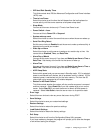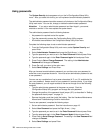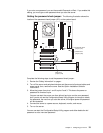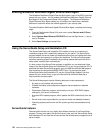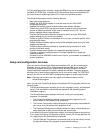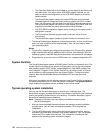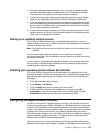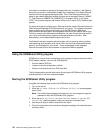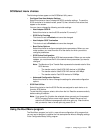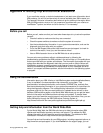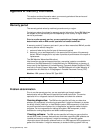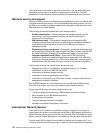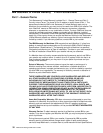
Chapter 2. Configuring your server 25
SCSISelect menu choices
The following choices appear on the SCSISelect Utility menu:
• Configure/View Host Adapter Settings
Select this choice to view or change the SCSI controller settings. To reset the
SCSI controller to its default values, press F6; then, follow the instructions that
appear on the screen.
You can view or change the following controller settings:
— Host Adapter SCSI ID
Select this choice to view the SCSI controller ID, normally 7.
— SCSI Parity Checking
This choice is set to Enabled and cannot be changed.
— Host Adapter SCSI Termination
This choice is set to Enabled and cannot be changed.
— Boot Device Options
Select this choice to configure startable device parameters. Before you can
make updates, you must know the ID of the device for which you want to
configure parameters.
— SCSI Device Configuration
Select this choice to configure SCSI device parameters. Before you can make
updates, you must know the ID of the device whose parameters you want to
configure.
Note: The Maximum Sync Transfer Rate represents the transfer rate for Ultra
SCSI devices.
– The transfer rate for Ultra3 SCSI LVD devices is 160 MBps.
– The transfer rate for Ultra2 SCSI LVD devices is 80 MBps.
– The transfer rate for Fast SCSI devices is 20 MBps.
— Advanced Configuration Options
Select this choice to view or change the settings for advanced configuration
options.
• SCSI Disk Utilities
Select this choice to view the SCSI IDs that are assigned to each device or to
format a SCSI device.
To use the utility program, select a drive from the list. Read the screens carefully
before making a selection.
Note: If you press Ctrl+A before the selected drives are ready, an Unexpected
SCSI Command Failure screen might appear. Restart the server and
watch the SCSISelect messages as each drive spins up. After the drive
that you want to view or format spins up, press Ctrl+A.
Using the Boot Menu program
The Boot Menu program is a built-in, menu-driven configuration utility program that
you can use to temporarily redefine the first startup device without changing settings
in the Configuration/Setup Utility program.



